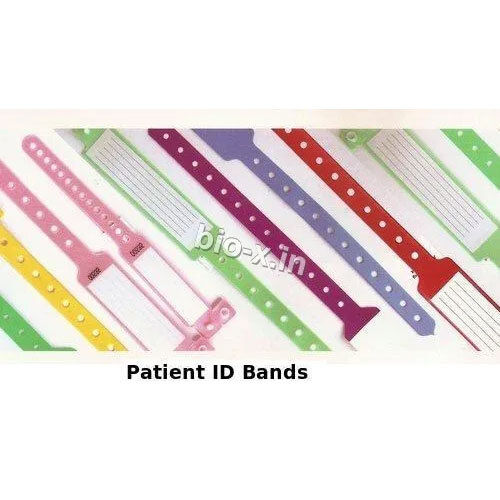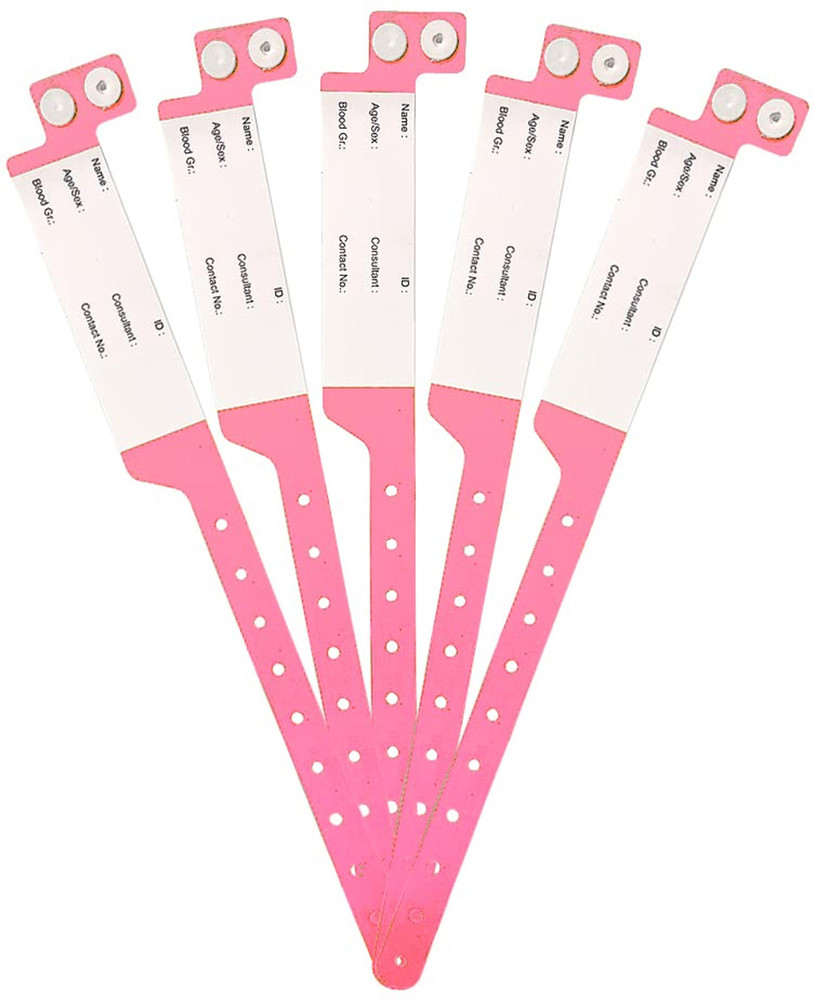How to Ensure the Protection and Accuracy of Patient Information with a Patient Identification Band
How to Ensure the Protection and Accuracy of Patient Information with a Patient Identification Band
Blog Article
Exploring the Numerous Sorts Of Patient Identification Band Utilized in Clinical Facilities
In the detailed world of healthcare, the essential function of Patient Identification bands commonly goes undetected. These bands, differing from simple paper wristbands to innovative RFID bands, develop the foundation of Patient safety and security protocols, making sure accuracy in Patient Identification. The huge variety of these bands, each with its unique advantages and restrictions, is frequently forgotten. As we navigate with this subject, one may get understanding into the refined intricacies and critical significance of such bands in medical facilities.
Comprehending the Value of Patient Identification Bands
While they might look like simple accessories, Patient Identification bands play an important duty in medical centers. These bands function as a critical tool for verifying Patient identification, stopping clinical mistakes related to misidentification. The bands usually display essential info such as the Patient's name, age, blood group, and any kind of well-known allergic reactions. They enable healthcare specialists to quickly access this crucial info, consequently facilitating accurate and timely clinical treatment. Patient Identification bands also help in simplifying administrative jobs, guaranteeing precise record-keeping and payment. In spite of their simplicity, these bands embody the principle of Patient safety, a foundation of top quality health and wellness treatment. Without them, the risk of medical errors, and as a result, Patient damage, could significantly raise.
Traditional Paper Wristbands: Their Usage and Limitations
Standard paper wristbands have actually been a staple in Patient Identification across different medical facilities. While their use is widespread, they harbor particular restrictions that might affect their performance in Patient administration. This section will certainly concentrate on the range of their application and the inherent drawbacks associated with their usage.
Paper Wristbands: Usage Extent
In the world of Patient Identification, paper wristbands have long held a critical role. These bands are generally made use of in outpatient setups, where the Patient's keep is momentary. The wristbands contain necessary details such as the Patient's name, date of birth, and an unique Identification number. This easy, yet efficient system, enables doctor to quickly and precisely determine clients, ensuring the appropriate treatment is administered. Paper wristbands are likewise used in emergency scenarios, where fast Identification is extremely important. Their usage prolongs to occasions like blood donation drives and mass inoculation programs, even more stressing their flexibility. In spite of innovations in modern technology, the humble paper wristband stays a trustworthy and cost-efficient service for Patient Identification in different health care circumstances.
Limitations of Paper Wristbands
In spite of their widespread use, paper wristbands are not without their drawbacks. Their physical toughness is among the substantial restrictions. Direct exposure to water, sweat, or rough handling can render them unreadable and even cause them to break down. Additionally, paper wristbands commonly lack the technical capabilities of even more modern-day choices, such as barcoding or RFID chips, limiting their functionality to just showing written details. The inability to upgrade or change the information on the wristband is another shortcoming. If the information is handwritten, readability can be compromised, leading to potential misidentification. Paper wristbands can cause discomfort or skin inflammation to some clients, particularly when worn for prolonged periods.
Barcoded Wristbands: Developments in Patient Identification
While Patient Identification has actually long been an important aspect of healthcare, the arrival of barcoded wristbands represents a significant leap ahead. These bands utilize the simpleness of barcoding modern technology, enabling for Patient details to be rapidly checked and accessed. They enhance the rate and precision of Patient Identification, lowering the risk of medical mistakes associated with misidentification. Barcoded wristbands are cost-efficient, simple to generate, and eliminate handwriting mistakes usual with hand-operated systems. They are not without restrictions. While they provide renovations over conventional bands, the barcode can come to be worn or smudged, rendering it unreadable. Despite this, barcoded wristbands remain an important device in modern-day health care setups, representing the intersection of innovation and Patient treatment.
Superhigh Frequency Identification (RFID) Bands: a Step Towards Futuristic Healthcare
The advancement of Patient Identification bands has actually caused the appearance of Radio Frequency Identification (RFID) Bands (patient identification band). These ingenious devices present crucial benefits for health care centers, offering a more efficient and technologically progressed means of Patient Identification. The implementation of RFID in healthcare is a considerable step towards a much more futuristic strategy to Patient management and safety
Understanding RFID Bands

RFID Bands: Secret Benefits
Largely, these bands boost Patient security by providing accurate, immediate Identification, thus minimizing medical errors. RFID bands can store a substantial quantity of Patient information, consisting of medical background and allergic reactions, enabling personalized care. On the whole, RFID bands stand for a substantial improvement in Patient Identification technology, benefiting both individuals and healthcare service providers.
Implementing RFID in Healthcare
As we enter a highly sophisticated age, the implementation of RFID bands in get more healthcare comes to be progressively vital. These bands give a smooth means to track and identify individuals, guaranteeing their safety and security and boosting effectiveness in treatment procedures. RFID bands use numerous benefits over typical Identification techniques. They can save a huge amount of information, consisting of the Patient's case history and treatment strategies, which can be easily accessed by doctor. This information assists medical professionals make informed choices pertaining to the Patient's therapy plan. RFID bands minimize medical errors by giving exact Patient Identification, which is crucial in protecting against misdiagnosis or wrong medicine administration. Hence, the execution of RFID bands is a significant step in the direction of improving Patient safety and healthcare distribution.

Color-Coded Wristbands: Aiding in Quick and Accurate Diagnosis
In the dynamic environment of a medical center, color-coded wristbands have actually become vital devices for swift and precise Identification of an individual's clinical condition. These wristbands, put on by people, carry certain colors that represent various clinical problems or standings. Red could indicate allergy risks, while yellow could represent an autumn danger. This system is created to provide instant aesthetic hints to health care carriers, improving Patient safety and security and care high quality. In emergency situations, using these wristbands allows for rapid decision-making. The performance of color-coded wristbands depends on the uniformity of color interpretation across healthcare organizations, needing typical requirements for consistent application.
Methods for Effective Application and Administration of Patient ID Bands
Achieving optimal use Patient Identification bands demands a well-structured method for their application and management. The initial step involves training all health personnel on the importance of properly using and reading these bands. Hospitals must systematize the use of ID bands across all departments, ensuring uniformity and decreasing inconsistencies. Regular audits must be performed to confirm adherence to plans and to remedy any type of variances. Patient education is likewise vital; clients need to recognize the function of the bands and the need for their consistent wear. patient identification band. Finally, it's important to have a backup strategy in position, such as barcode scanning or biometrics, to guarantee that Patient Identification you could check here is never compromised.
Conclusion
Patient Identification bands are crucial in medical facilities to make sure safety and security and accuracy. Efficient application and management of these bands can significantly lower clinical mistakes, increase effectiveness, and enhance total Patient treatment.
These bands, differing from simple paper wristbands to sophisticated RFID bands, form the foundation of Patient safety and security protocols, ensuring accuracy in Patient Identification.The advancement of Patient Identification bands has actually brought about the introduction of Radio Regularity Identification (RFID) Bands. Overall, RFID bands represent a significant innovation in Patient Identification technology, profiting both people and healthcare carriers.
RFID bands minimize clinical errors by supplying exact Patient Identification, which is important in stopping misdiagnosis or wrong medicine administration. Patient education is also critical; patients should understand the objective of the bands and the demand for their constant wear.
Report this page